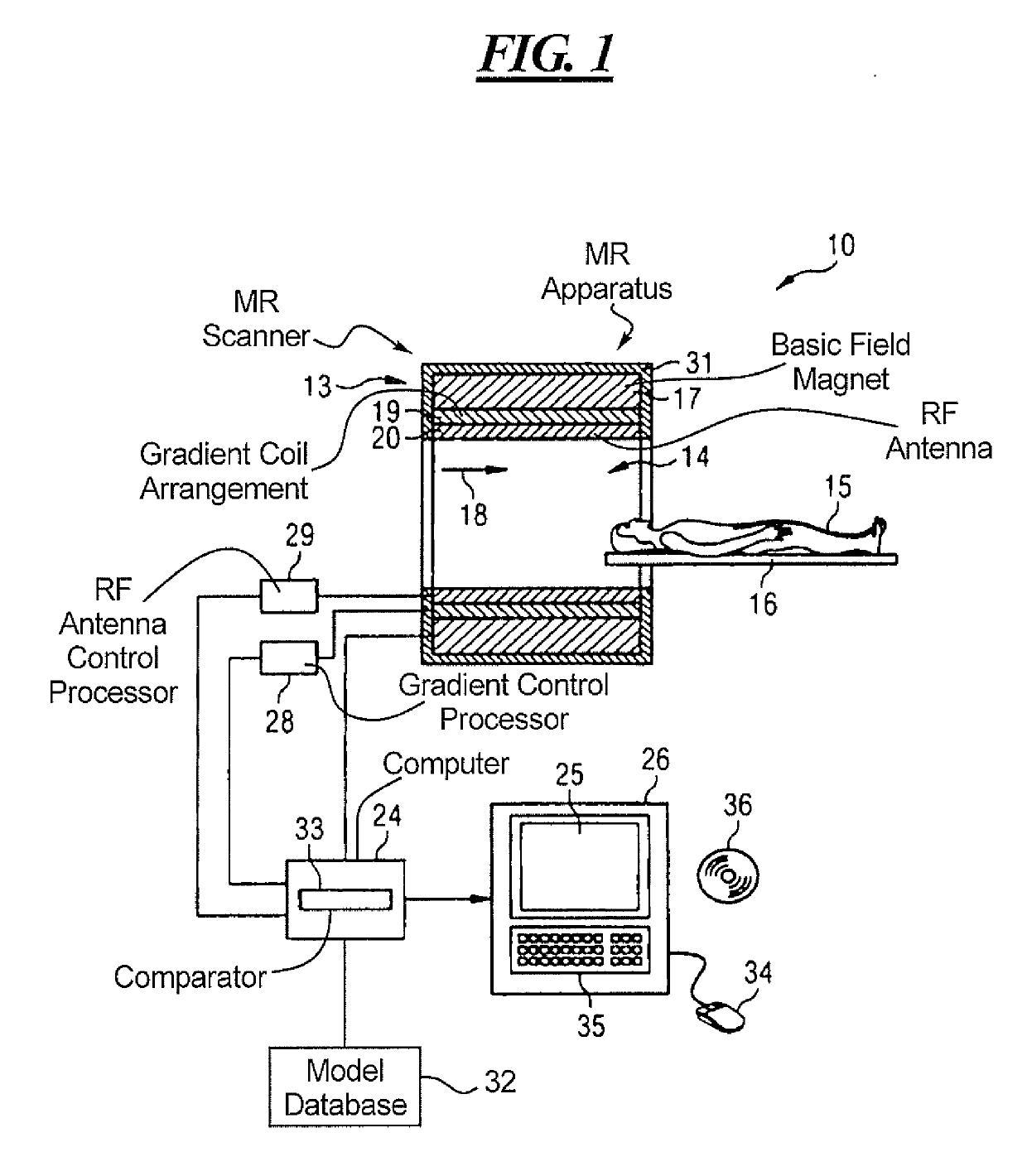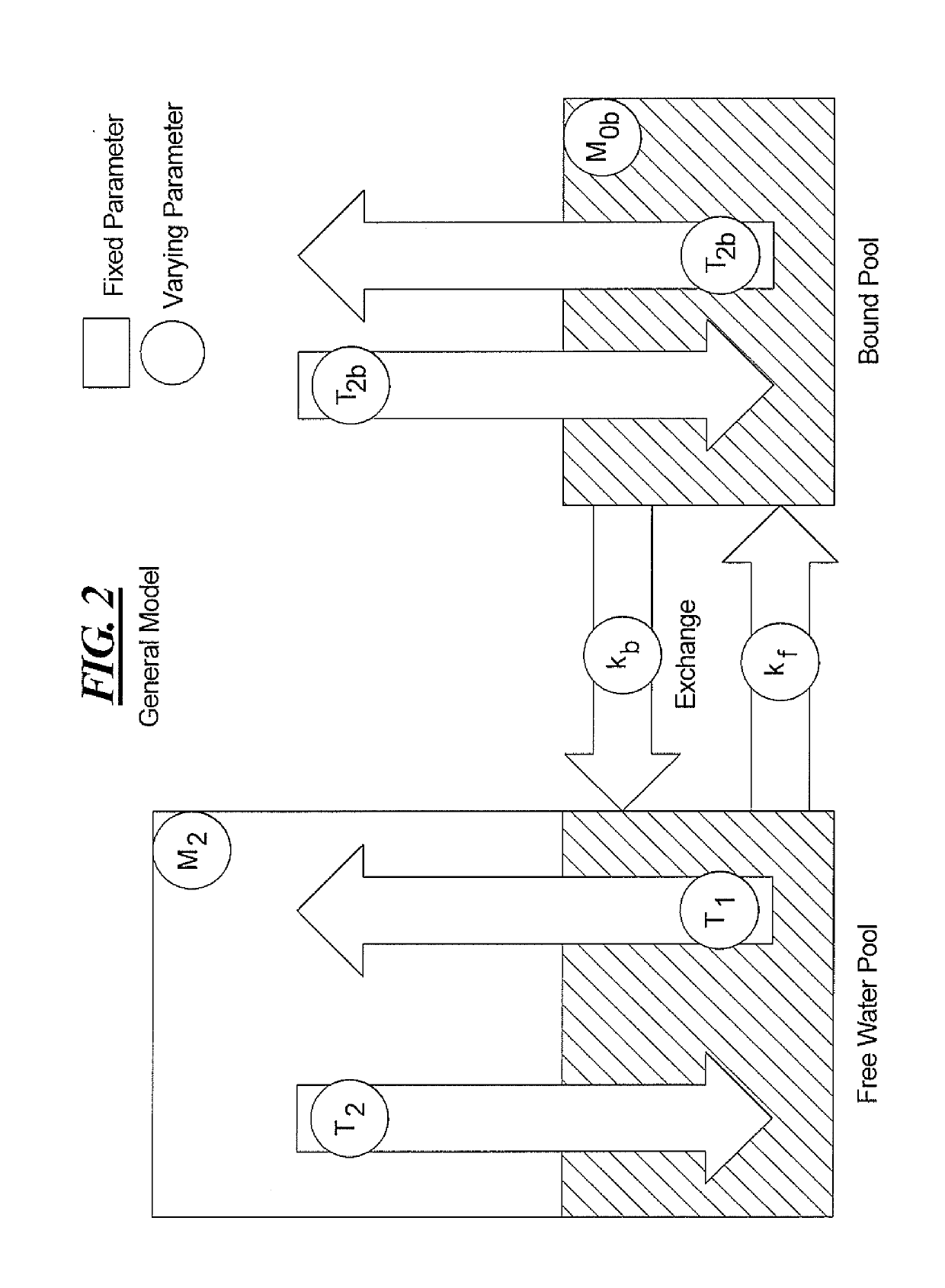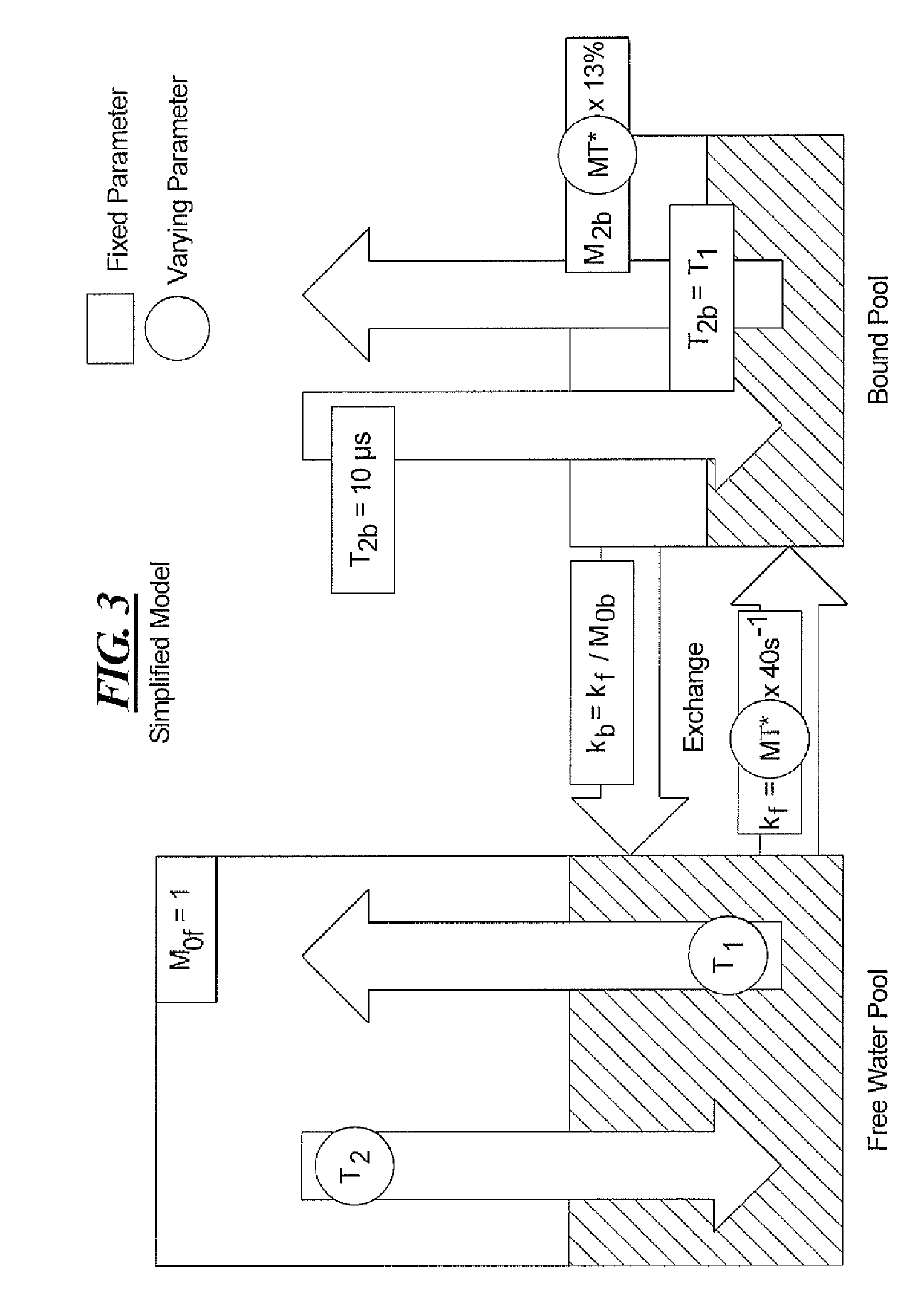Method and apparatus for mitigating the effect of magnetization transfer in model-based magnetic resonance techniques
a model-based magnetic resonance and magnetization transfer technology, applied in the field of method and apparatus, can solve the problems of inability to describe the mt effect by the basic bloch equation used in most fast quantitative mri techniques, the resulting quantitative parameters and the experimental setup are undetected, and the impact of mt is too large to be used in routine clinical examination, etc., to achieve the effect of reducing computational effort and probable fitting ambiguities, and minimizing the impa
- Summary
- Abstract
- Description
- Claims
- Application Information
AI Technical Summary
Benefits of technology
Problems solved by technology
Method used
Image
Examples
Embodiment Construction
[0013]FIG. 1 is a schematic illustration of a magnetic resonance (MR) apparatus 10 according to the invention. The magnetic resonance apparatus 5 has an MR data acquisition scanner 13 with a basic field magnet 17 for the generation of a strong and constant basic magnetic field 18. The MR scanner 13 has a cylindrical patient receptacle 14 for receiving an examination object, in this case a patient 15. The patient receptacle 14 is cylindrically enclosed by the scanner 13 in a circumferential direction. The patient 15 can be moved into the patient receptacle 14 by a patient support 16. The patient support 16 has a support table for this purpose, which is arranged in a mobile manner inside the MR scanner 13. The scanner 13 is shielded externally by a housing shell 31.
[0014]Furthermore, the scanner 13 has a gradient coil arrangement 19 for the generation of a magnetic field gradient that is used for spatial encoding during imaging. The gradient coil arrangement 19 is controlled by a grad...
PUM
 Login to View More
Login to View More Abstract
Description
Claims
Application Information
 Login to View More
Login to View More - R&D
- Intellectual Property
- Life Sciences
- Materials
- Tech Scout
- Unparalleled Data Quality
- Higher Quality Content
- 60% Fewer Hallucinations
Browse by: Latest US Patents, China's latest patents, Technical Efficacy Thesaurus, Application Domain, Technology Topic, Popular Technical Reports.
© 2025 PatSnap. All rights reserved.Legal|Privacy policy|Modern Slavery Act Transparency Statement|Sitemap|About US| Contact US: help@patsnap.com



